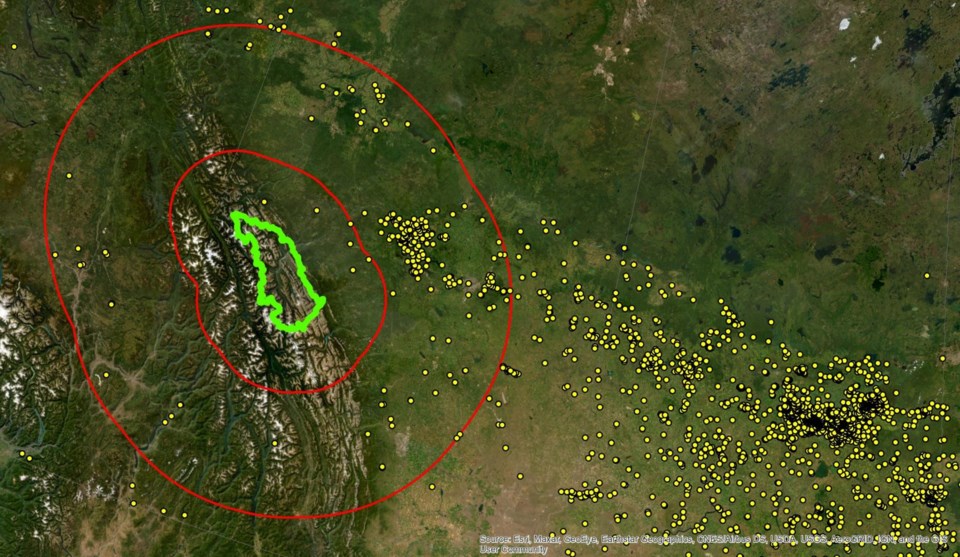Scott Hayes | [email protected]
Local Journalism Initiative Reporter
An “ecological trainwreck” lurks in the woods: wild pigs. They could already be somewhere within the 11,000 square kilometres of Jasper National Park.
Last week, the Canadian Wild Pig Research Project published a map image on its social media page showing locations of wild pig sightings, along with the question: “What is the risk of wild pigs to the mountain parks in Alberta and British Columbia?”
Project head and University of Saskatchewan Professor Ryan Brook said that proximity is “a massive red flag.” There is no shortage of these animals in the general area, and their numbers are expanding rapidly and out of control. The damage that follows in their wake will certainly increase as well.
He called them “the worst invasive large mammal on the planet.” After he went to Texas to help capture pigs in one area, he observed that there were no birds, no snakes and not even insects, only a lot of severely disturbed ground.
“The silence was deafening. Anything from about five feet high down was just gone. There was virtually no living material of any kind,” he said.
“The ground was just devastated because pigs don’t just graze; they’re rooters. They get their noses in the ground, and they rip up the ground to get roots and insect larva. They leave this terrible mess that looks like a rototiller went through it. They tear the land apart. It opens the land for invasive plant species to move in. It takes years and years to recover. They are an ecological nightmare. They are the worst invasive large mammal on the planet.”
They kill and eat ground nesting birds and their eggs, small mammals, white-tailed deer and even elk calves and likely also calves of caribou and moose. They are extremely aggressive and will chase off many different animals. Their razor-sharp tusks help with that task.
They do not have sweat glands, so they wallow in the mud to cool off, which can contaminate the water with feces and urine with high levels of Salmonella, E. coli, and other harmful microorganisms.
“This is why wild pigs are referred to as an ‘ecological trainwreck’,” Brook said.
They have an “incredible” reproductive rate also, he added, with litters of six being born within four months, and they become sexually mature themselves eight months after that.
He recalled a truck accident that released 11 wild pigs into a provincial park within the last decade. After three years, there were more than 130 animals in that herd, called a sounder.
A whole sounder must be destroyed at the same time as survivors learn to avoid threats very quickly.
“The potential for it to go from nothing to being a major out-of-control problem is very, very real. It has happened and continues to happen every day in Canada.”
Brook said that he hasn’t yet heard of wild pig sightings in mountainous regions of Canada but that he won’t be surprised when it does happen.
“They continue to spread into new places, like potentially Jasper, very likely, but also to get very, very high numbers where the impacts become devastating.”
Megan Evans, executive director of the Alberta Invasive Species Council, said there is good work happening in Alberta with the province’s strategic and co-ordinated trapping program as part of a collaboration with Alberta Pork. They track occurrences of wild boar and set up remotely monitored traps to remove all those pigs.
“Based on the level of infestation and our management goal of eradication, that is really the best way to proceed as opposed to encouraging hunting as a control method, where if you pick off a couple members of the group, then you have actually taught and educated the remaining pigs to avoid being hunted and trapped in the future,” she said.
“That can actually make them more challenging to manage.”
The province does encourage people to report sightings using the online form on its website or by calling 310-3276 (FARM).




